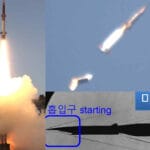As the electromagnetic battlefield becomes increasingly contested, ensuring resilient Positioning, Navigation and Timing (PNT) has become critical for high-end radar systems. Safran Federal Systems is responding to this challenge by integrating hardened Global Navigation Satellite System (GNSS) solutions into next-generation U.S. military radar platforms. The initiative aims to bolster operational reliability and survivability against jamming and spoofing threats from near-peer adversaries.
GNSS Vulnerabilities in Radar-Centric Warfare
Modern radar systems—whether ground-based air defense radars or airborne surveillance platforms—depend heavily on precise timing and geolocation data for coherent signal processing and accurate target tracking. This dependency makes them vulnerable to GNSS denial tactics such as jamming or spoofing.
The U.S. Department of Defense (DoD) has identified PNT resilience as a key priority in its 2023 Joint All-Domain Command and Control (JADC2) implementation strategy. As adversaries like Russia and China field increasingly sophisticated electronic warfare (EW) capabilities—including mobile GNSS jammers, satellite spoofers, and regional denial systems—ensuring uninterrupted access to trustworthy PNT data has become essential for maintaining radar performance under contested conditions.
In particular, long-range surveillance radars used for ballistic missile defense (e.g., AN/TPY-2), airspace monitoring (e.g., TPS-77), or integrated fire control rely on tightly synchronized timing across distributed arrays or sensor fusion nodes. Even minor disruptions in GPS signals can degrade detection fidelity or introduce latency into kill chain operations.
Safran’s Anti-Jam GNSS Solutions
Safran Federal Systems—a joint venture between Safran Electronics & Defense and Orolia Defense & Security—has been at the forefront of delivering assured PNT technologies tailored for military applications. Its portfolio includes anti-jam GPS receivers, M-code-capable modules, atomic clocks, and inertial navigation systems designed to operate in GPS-denied environments.
The company’s flagship offering relevant to this effort is the VersaSync® platform—a ruggedized time server that integrates multiple timing sources including GPS/GNSS signals with anti-jam antennas (AJAs), chip-scale atomic clocks (CSACs), and inertial sensors for holdover capability. This ensures continuity of timing even when external signals are lost or compromised.
Additionally, Safran’s BroadShield™ software suite provides real-time detection of spoofing attempts or signal anomalies by analyzing RF characteristics across multiple constellations (GPS/Galileo/GLONASS/BeiDou). When coupled with hardware-based protection like Controlled Reception Pattern Antennas (CRPAs), these tools create a layered defense against EW threats targeting radar PNT dependencies.
Integration with Next-Generation Radar Platforms
The recent announcement by Safran Federal Systems highlights its collaboration with undisclosed U.S.-based defense contractors responsible for developing next-generation radar platforms—likely tied to programs such as LTAMDS (Lower Tier Air & Missile Defense Sensor), Sentinel A4 upgrades, or future airborne ISR radars under ABMS initiatives.
While specific integration details remain classified due to operational security concerns, the company confirmed that its resilient PNT solutions are being embedded at the system architecture level—ensuring synchronization across distributed apertures or sensor fusion nodes even under heavy EW attack.
- M-Code Integration: Use of modernized military GPS signals with enhanced encryption and anti-jam features
- Tightly Coupled INS-GNSS: Hybrid navigation combining inertial sensors with satellite updates for robustness
- PNT Holdover: Use of atomic clocks to maintain timing during signal outages
- Spoofing Detection: Real-time analytics flagging anomalous satellite behavior
This approach aligns with broader DoD efforts under the Assured-PNT Cross Functional Team (CFT), which seeks modular plug-and-play solutions that can be rapidly fielded across multiple platforms without bespoke engineering per use case.
Pacing Threats from Russia and China Drive Urgency
The urgency behind these upgrades stems from real-world demonstrations of adversary capabilities. Russian forces have employed mobile GPS jammers like R-330Zh “Zhitel” in Ukraine since 2014; more recently they’ve demonstrated regional GNSS denial around Kaliningrad using Pole-21 systems capable of disrupting signals over hundreds of kilometers.
China’s PLA Strategic Support Force has also invested heavily in space-based EW assets capable of disrupting satellite communications and navigation services over wide areas—a threat vector particularly concerning for Indo-Pacific operations where distributed maritime ISR relies on resilient timing links between airborne sensors and naval C2 nodes.
The 2023 DoD Annual Report on Military Developments Involving the PRC specifically called out China’s “growing ability to target space-based navigation infrastructure” as a strategic risk requiring countermeasures across all domains—including radar-centric air defense networks vulnerable to loss of synchronization.
Toward Modular Assured-PNT Architectures
Sensors are only as effective as their ability to communicate trusted data in real time—and that requires assured timing at every node within a networked kill web. As JADC2 matures into an operational reality through programs like Project Convergence and ABMS spirals, modular assured-PNT building blocks will be essential enablers not just for radars but also UAVs, EW systems, artillery fire control networks, and beyond.
Safran’s work represents a microcosm of this larger shift: moving from monolithic platform-specific integrations toward scalable architectures where hardened timing modules can be deployed interchangeably across domains—from ground-based IADS radars to spaceborne sensors operating in LEO/MEO constellations supporting missile warning missions.
Outlook: From Radar Resilience to Multi-Domain Dominance
The integration of Safran’s hardened GNSS/PNT technologies into next-gen U.S. radar platforms marks a significant step toward building EW-resilient sensor architectures capable of surviving peer-level conflict scenarios. As electromagnetic spectrum warfare continues evolving rapidly—with AI-enabled spoofers and drone-borne jammers entering the battlespace—the demand for robust timing integrity will only grow more acute.
If successful at scale, these technologies could form part of a broader ecosystem enabling real-time cross-domain kill chains—from early warning via over-the-horizon radars through midcourse tracking by space assets down to terminal engagement by SHORAD batteries—all synchronized via resilient PNT infrastructure immune to hostile interference.










